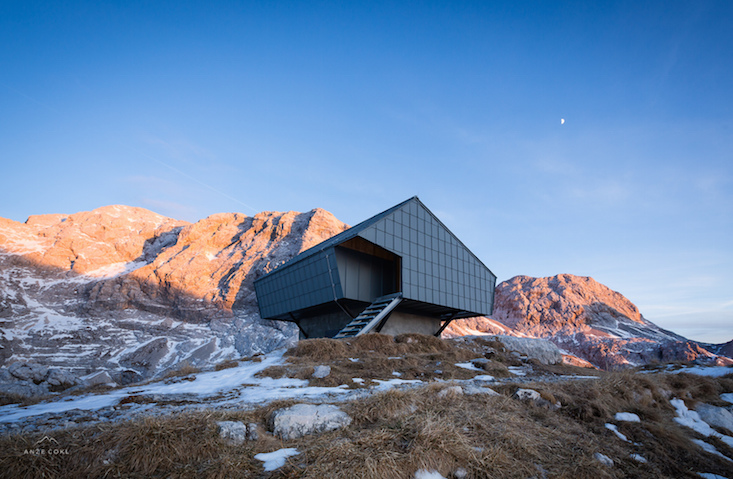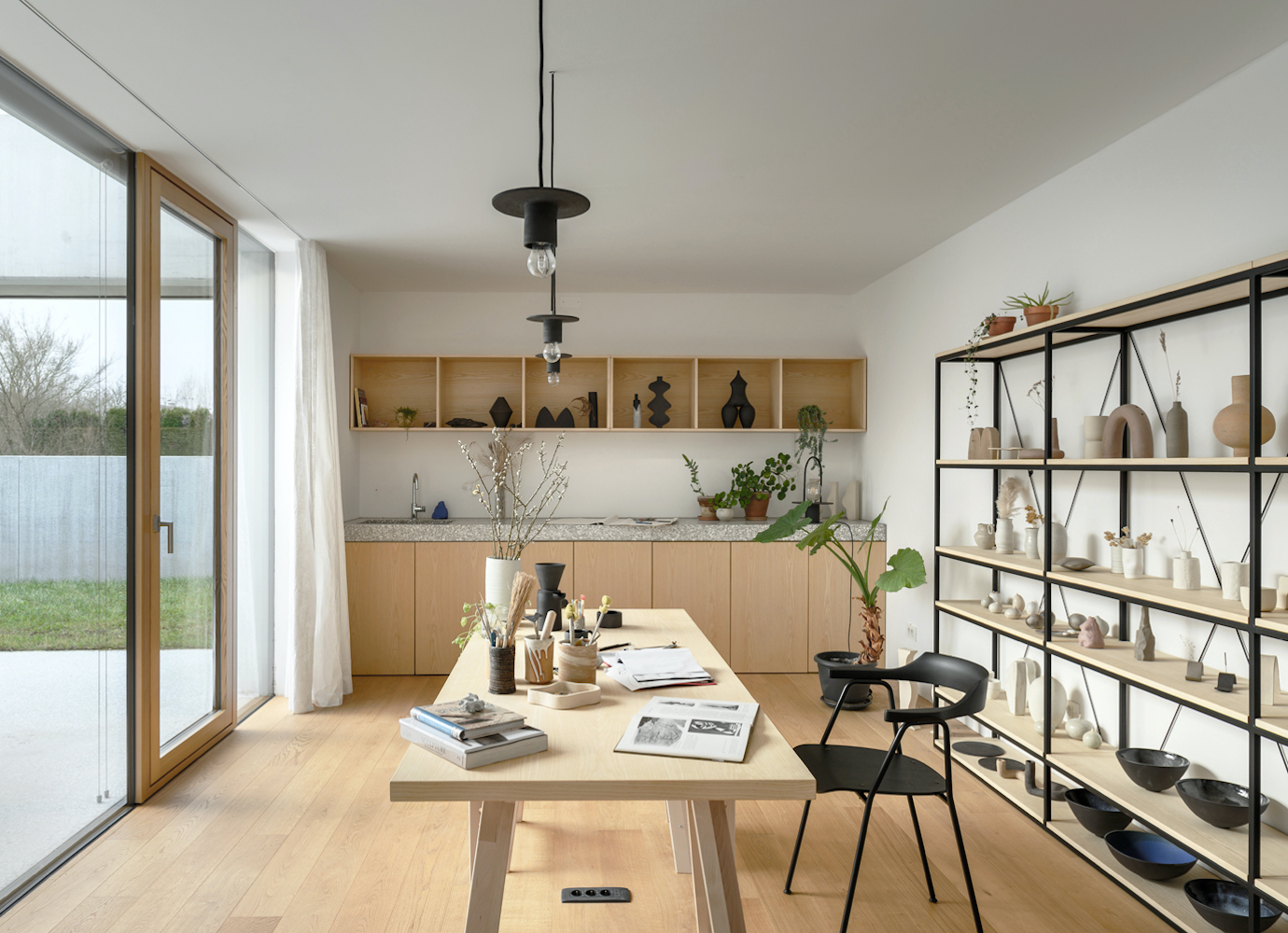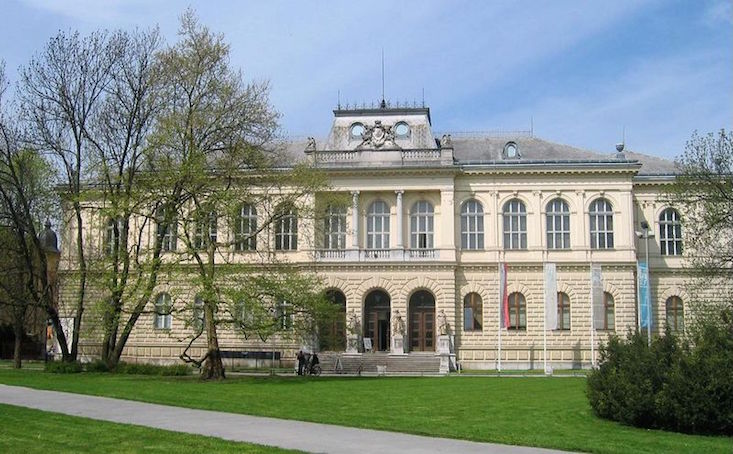How Slovenia’s government seized its cultural institutions
In the past 12 months, a wave has swept through Slovenia’s cultural scene. Seven major museums, including The Slovene Ethnographic Museum, The National Museum of Slovenia, The Museum of Architecture and Design, and the Moderna Galerija, have all seen their directors change over the course of a year. Officially, their contracts were not renewed, leaving new curators to take over their roles. But officials across all political parties — including the dominant Slovenia Democratic Party — have described the oustings as political, aligned with a wider authoritarian shift under the rule of Slovenian Prime Minister Janez Janša.
Once perceived as the more forward-looking country of the Balkans — a model Yugoslav republic and then a model “new” EU member state — Slovenia is finding itself governed by increasingly authoritarian rule. Although Janša does not hold a parliamentarian majority in his ruling coalition, his government has sparked national outrage with moves that range from political interference at public media channel, Radiotelevizija Slovenija, to laws which allow developers to build near sources of drinking water. Janša’s links to Hungary’s ruling Fidesz Party, which funds one of the Slovenian leader’s private TV channels, has seen Janša portrayed as a far-right politician in the international media. But many Slovenians see the country’s cultural shift as a power grab that has little to do with ideology. Instead, the arts sector is being used as a tool to flex officials’ muscles.
From the exhibition Towards a Concrete Utopia, Architecture in Yugoslavia 1948-1980 at the MoMA in New York, 2018. Image: MAO archive
“They are just trying to show their power,” Matevž Čelik, the former head of Ljubljana’s Museum of Architecture and Design told The Calvert Journal. Čelik is widely respected across both national and international artistic communities for his widely acclaimed achievement of transforming Slovenia’s Museum of Architecture and Design from an outdated, quiet, socialist-era institution into a dynamic, contemporary cultural centre, all within the ten years of his leadership, which ended in 2020. “They are not dealing with the consequences of the pandemic for cultural institutions, or with how to reopen cultural institutions.”
BIO 25's Countryside Reloaded project in the Pannonian village of Genterovci drew attention to the importance of the understanding of modern food production and consumption processes
Last summer, as his second five-year contract expired, Čelik was the only candidate to be invited for interviews for the role of museum director organised by the Ministry of Culture. After his first interview, he was failed for not “realising the museum’s core mission: the field of collecting, documenting, studying, interpreting and exhibiting the cultural heritage of Slovenian architecture, photography, and design”. Čelik disagreed. “When I joined the museum ten years ago, there was not even an inventory of the museum’s collections,” he says. “We created a digital inventory of 40,000 pieces, and in the next 10 years, we were going to add another 10,000 pieces.” The Ministry accepted the counter-argument and invited Čelik for a second interview. This time, the commission said Čelik “lacked an appropriate attitude towards the field of Slovenian architecture and its promotion in the domestic and international space”. Again, the curator felt the argument fell flat: the museum had reformed Ljubljana’s Biennial of Design specifically to promote young architects and designers, attracting international talent and tourists to Ljubljana. When the Museum of Modern Art in New York created their 2018-2019 exhibition Toward a Concrete Utopia: Architecture in Yugoslavia, 1948–1980, the vast majority of the design and architecture items on display came from Slovenia’s Museum of Architecture and Design; and, when the Museum of Finnish Architecture started undergoing reform in 2019, they organised a visit to Ljubljana to learn from Čelik’s team’s experience. But after Čelik’s two failed rounds of interviews, the Ministry decided to appoint curator Bogo Zupančič, part of the museum’s staff, as the new director. As soon as Zupančič‘s new role was announced, the museum’s deputy director, head of collections, and head of programming resigned. They felt the ministry’s mistrust in Čelik was also a mistrust in them, and did not think of Zupančič as a “teamplayer”.
Permanent installation of MAO collections at Fužine Castle in Ljubljana. Image: MAO
Čelik argues the ideological slant behind this move is only a facade. “It looks like a psychopathic desire for control to me because neither is Zupančič that conservative or right wing, nor am I a radical leftie, as they accused me of being,” he says. “They are just trying to show their power.”
A similar case took place at Moderna Galerija. “We were replaced mostly by people who are very inexperienced,” Zdenka Badovinac, who directed the institution between 1993 and 2020, said of the new appointments. Badovinac’s contract expired in November last year, and, following three failed rounds of interviews, the government appointed Robert Simonisek, an art historian, poet, and freelance tour operator, as an interim director. Literary critic Aleš Vaupotič was also appointed the new head of Moderna Galerija.
Throughout the process, Badovinac was accused of being too “sociological” and “geopolitical”, and not patriotic enough in her work. After Badovinac curated Bigger Than Myself, a major show featuring more than 50 artists from the Yugoslav era at Rome’s MAXXI, the Slovenian embassy in Italy criticised the exhibition for not featuring Slovene artists alone in a dedicated show. In one dispatch, Slovenian Ambassador to Italy Tomaž Kunstelj said the embassy would “not promote or organise exhibitions from Slovenia on the topic of ex-Yugoslavia, in particular not during the 30th anniversary period”. But Badovinac argues this is not just an ideological fight.
Nedko Solakov, Yellow (1997) as part of The Art of Eastern Europe in Dialogue with the West, presented in the then-unrenovated premises of the Museum of Contemporary Art Metekova, Ljubljana (2000). Image: Lado Mlekuž, Matija Pavlovec
“This is a bigger phenomenon that goes beyond Janša and individual autocrats,” Badovinac says. “It’s the general situation in Eastern Europe, where politics becomes a tool for individual or party power, putting social interests at risk. It’s not exclusively a right-wing agenda, but our countries are extremely corrupt at the moment, so this politicisation goes with the agenda of corruption, to treat the state as a means to individual power and interests.”
An open letter, addressed to the Slovenian culture minister Vasko Simoniti, published on November 17, and signed by more than a thousand cultural figures and art consumers, condemned the government’s removal of both Badovinac and Čelik. “The field of culture has been severely affected by the coronavirus epidemic, and it has been further affected by decisions at the Ministry of Culture that threaten living culture, cultural heritage, the professionalism, and autonomy of decision-making bodies and cultural institutions,” the letter said. In turn, the Slovene government admitted that the firings were “a political process, but a process that requires regular transitions of power, which Slovenia sadly lacked for most of its independent history.”
“This is a bigger phenomenon that goes beyond Janša and individual autocrats”
What next? “The government might not last long,” Badovinac argues. Indeed, political in-fighting has led to recent resignations of coalition members, and political analysts do not exclude that parliamentary elections may happen sooner than they are due next year. Protests as well as petitions have become a common occurrence in Slovenia over the past few months, in response to a range of political decisions. Among these are demonstrations against the government’s heavy handed control of the media, which has resulted in Slovenia falling in the Press Freedom Index, from 32nd place in 2020, to 36th in 2021. In any case, whether the current government stays or goes soon, Slovenia’s cultural landscape has been irrevocably changed — with politically-appointed leaders heading key cultural institutions.
Tanja Ostojić, Looking for a Husband with EU Passport (2000–-2005), from The Present and Presence, Museum of Contemporary Art Metelkova, Ljubljana (2012). Image: Dejan Habicht / Photo courtesy of Moderna galerija, Ljubljana
As for former museum directors who have lost their jobs, many are looking for other opportunities both at home and abroad. Čelik, who has meanwhile been headhunted for a few international positions, believes that the cultural sector is too politicised in Slovenia and the rest of Eastern Europe. In his mind, cultural institutions should be run by boards of experts, and the Ministry of Culture should accept their decisions, rather than the other way round. “My appointment [in 2010] was no better in this sense, because it was political; it was following the same laws. Yet it was progressive — there was a minister of culture who had strategy and ambitions to reform the museum sector, and invited me as an expert in the field. But these procedures in the future should not be left to the chance of what kind of government we have.”


